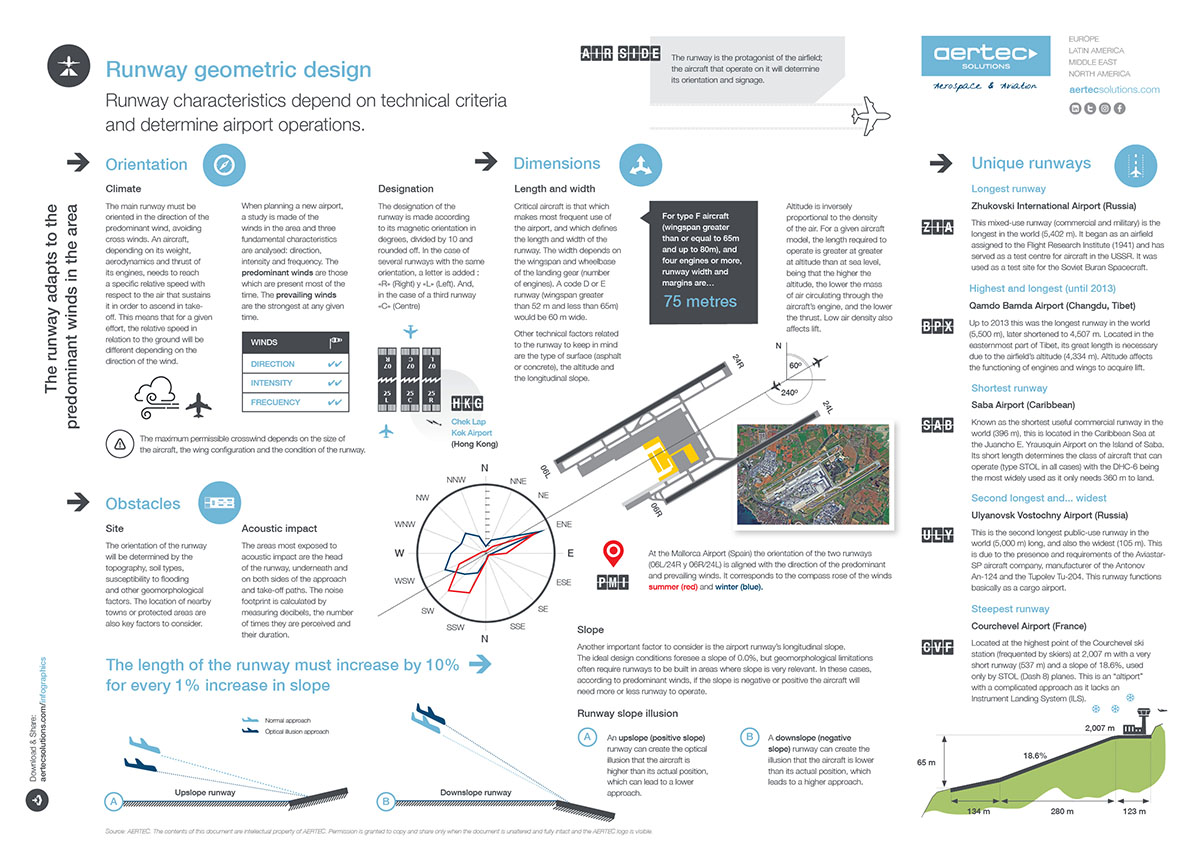Runways for aircraft take-off and landing are the purpose of an airport. They are the fundamental element, and everything revolves around the action taking place on them. The dimensions, orientation, condition or number of available runways conditions the development of operations, and therefore, the airport’s capacity. Furthermore, according to a runway’s characteristics, some aircraft will be able to use it and others will not.
Aspects such as length, slope or orientation are key in the development of operations at any airport.
The runway’s orientation is key for winds and topography to enable the greatest number of operations possible. Orientation also makes it possible to minimize the impact (especially acoustic) of the airport on nearby communities and protected areas.
The length and width of the runway will be key factors for determining which type of aircraft can use it safely.
The slope, often conditioned by the topography, will also determine the development of airport operations.
In this infographic we will cover those aspects that affect the geometry of airport runways, showing some examples of each case.
[View and download infographic]


